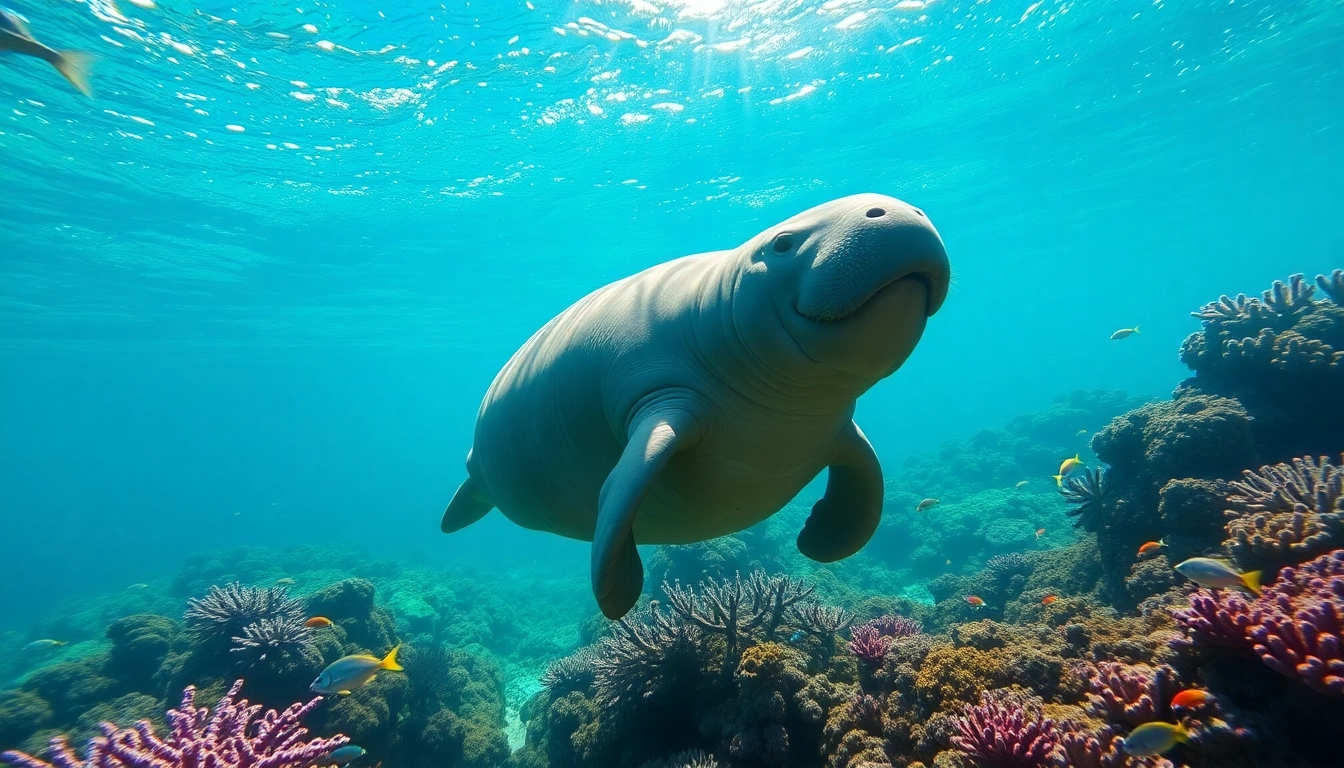Introduction to Manatees Puerto Rico
Manatees, often referred to as sea cows, are gentle and fascinating marine mammals that inhabit warm coastal waters and rivers. In Puerto Rico, these majestic creatures thrive in the island’s rich ecosystems. As warm-blooded animals, manatees play a crucial role in maintaining the health of marine environments by grazing on seagrasses and maintaining aquatic vegetation. If you’re looking for an unforgettable experience in Puerto Rico, understanding the habits, habitats, and interactions with these wildlife wonders—especially through activities like snorkeling and kayaking—can set the stage for a memorable adventure. From academic research to conservation efforts, manatees puerto rico is a topic that embodies both excitement and responsibility.
What are Manatees?
Manatees are large, slow-moving marine mammals belonging to the family Trichechidae for the West Indian manatee. Characterized by their robust bodies, paddle-like flippers, and wide, flattened tails, these creatures can weigh up to 1,200 pounds and measure up to 13 feet in length. They are herbivorous and primarily forage on seagrass and other aquatic plants, consuming up to 10% of their body weight daily. Manatees are often spotted in shallow water areas, where they graze and find refuge from predators.
The Importance of Manatees in Ecosystems
The ecological role of manatees is significant. By munching on seagrass and other vegetation, manatees help maintain the health of these ecosystems. Their grazing behavior promotes the growth of seagrass, which provides habitat for many marine species, from fish to coral. Healthy seagrass beds also act as natural filters for water quality and provide stability to the shoreline. Moreover, as a keystone species, manatees foster the biodiversity of their habitats, influencing other fauna and flora. Understanding their ecological contributions highlights the necessity of protecting them and their habitats.
Where to Find Manatees Puerto Rico
Puerto Rico is home to various locations where manatees can be spotted. Generally, these gentle giants prefer shallow coastal waters, estuaries, lagoons, and rivers. Key areas to watch for manatees include:
- Condado Lagoon: Located in San Juan, this inner lagoon is a popular spot for paddleboarding and kayaking, where manatees are often sighted.
- Bahía de Jobos: A coastal area with extensive seagrass beds that provide a rich feeding ground.
- The Fajardo Area: Including the nearby and often quieter lagoons, this region offers pristine waters that manatees frequent.
- La Parguera: This area features mangroves and shallow bays, attracting manatees who enjoy grazing on the abundant vegetation.
Conservation Efforts for Manatees Puerto Rico
Current Status of Manatees
The conservation status of manatees in Puerto Rico is a concerning topic. Manatees are classified as vulnerable by the International Union for Conservation of Nature (IUCN). Factors such as habitat loss, water pollution, and boat strikes contribute to their declining populations. In Puerto Rico, conservationists are actively engaging in research and advocacy to promote policy changes and enhance protective measures.
Organizations Dedicated to Manatee Care
Several organizations are dedicated to the conservation and rehabilitation of manatees in Puerto Rico:
- Centro de Conservación de Manatíes del Caribe: This facility focuses on the rescue, rehabilitation, and research surrounding manatees. It offers educational programs that inform both locals and tourists about the importance of these mammals.
- Seacology: Engaged in habitat protection to safeguard manatee populations, Seacology collaborates with local communities to implement sustainable fishing practices.
How You Can Help
Individuals wishing to contribute to manatee conservation can take several actionable steps:
- Educating Yourself and Others: Knowledge is power; spread awareness about the importance of manatees and their habitats.
- Responsible Boating: Reduce boat speeds in areas known for manatee presence to minimize the likelihood of accidents.
- Supporting Local Conservation Initiatives: Engage with or contribute to local organizations focused on protecting marine life.
- Participating in Clean-Up Drives: Keeping waterways clean reduces pollution that can harm manatees and their habitats.
Best Activities with Manatees Puerto Rico
Swimming and Snorkeling Opportunities
While manatees are generally not aggressive, swimming or snorkeling with these mammals requires caution and respect for their space. Local tours occasionally offer swimming experiences where individuals can respectfully observe manatees in their natural habitat. Participants must adhere strictly to guidelines set by tour providers to ensure the safety and well-being of both humans and manatees.
Guided Tours to See Manatees
Guided eco-tours are among the best ways to enhance your experience with manatees. Knowledgeable guides provide insights into the behavior and habitat of these creatures while ensuring the tour is conducted responsibly. During such tours, participants may have the chance to learn more about their diets, social behaviors, and the challenges they face in the wild.
Kayaking Adventures with Manatees
Kayaking is an eco-friendly way to explore areas inhabited by manatees. Tours often take place in calm waters, allowing paddlers to glide silently while observing manatees and other wildlife. This low-impact activity fosters a sense of respect and connection with nature and provides an up-close look at the aquatic world. Various tour providers offer themed kayaking trips specifically designed to encounter manatees.
Spotting Tips for Manatees Puerto Rico
Best Time of Year to See Manatees
Manatees can be spotted year-round in Puerto Rico, but the best times for sightings tend to be during warmer months when waters are more temperate. However, certain factors—such as food availability and water conditions—can also dictate their visibility. Early mornings and late afternoons are often ideal for spotting manatees, as they are more active during these times.
Popular Locations for Sightings
Specific areas offer higher chances of manatee encounters. In addition to the previously mentioned locations, other spots include:
- La Parguera: Particularly known for its rich marine life, this area is a hotspot for viewing manatees.
- Sandy Point National Wildlife Refuge: As a protected site, this refuge promotes a safe environment for manatees.
What to Bring for a Manatee Viewing
When planning an outing to observe manatees, certain items can enhance your experience:
- Comfortable Clothing: Quick-drying clothes and sturdy water shoes are essential for comfort.
- Binoculars: Essential for spotting manatees from a distance without disturbing them.
- Camera: Capture the moments, but ensure that your camera doesn’t become a disruption to the natural setting.
- Sunscreen: Use reef-safe sunscreen to protect both your skin and the ocean’s delicate ecosystem.
Experiences Beyond Manatees Puerto Rico
Explore Other Wildlife in Puerto Rico
Puerto Rico hosts a myriad of wildlife beyond just manatees. Birdwatching is popular in the island’s many reserves, as it is home to numerous native and migrating species. Explore the opportunity to see iguanas sunbathing along shores or even glimpse the colorful coquí frogs, famed for their night calls.
Enrich Your Visit with Local Culture
In addition to wildlife, Puerto Rico has a rich cultural tapestry. Engage with local history through museums or historic sites, and don’t miss out on the opportunity to savor traditional Puerto Rican cuisine at local eateries. Each cultural encounter not only enriches your visit but promotes a greater understanding of the community that lives symbiotically with its natural environment.
Travel Tips for a Memorable Adventure
For an enriching experience, consider these travel tips:
- Embrace Local Guides: Experience the island through the eyes of local experts who provide valuable insights into unique ecosystems and cultural heritage.
- Plan Ahead: Research activities in advance to tailor your experience to include both manatee observations and other exploration opportunities.
- Stay Respectful: Practicing eco-tourism principles ensures that you are contributing to the preservation of the environment that you are exploring.



